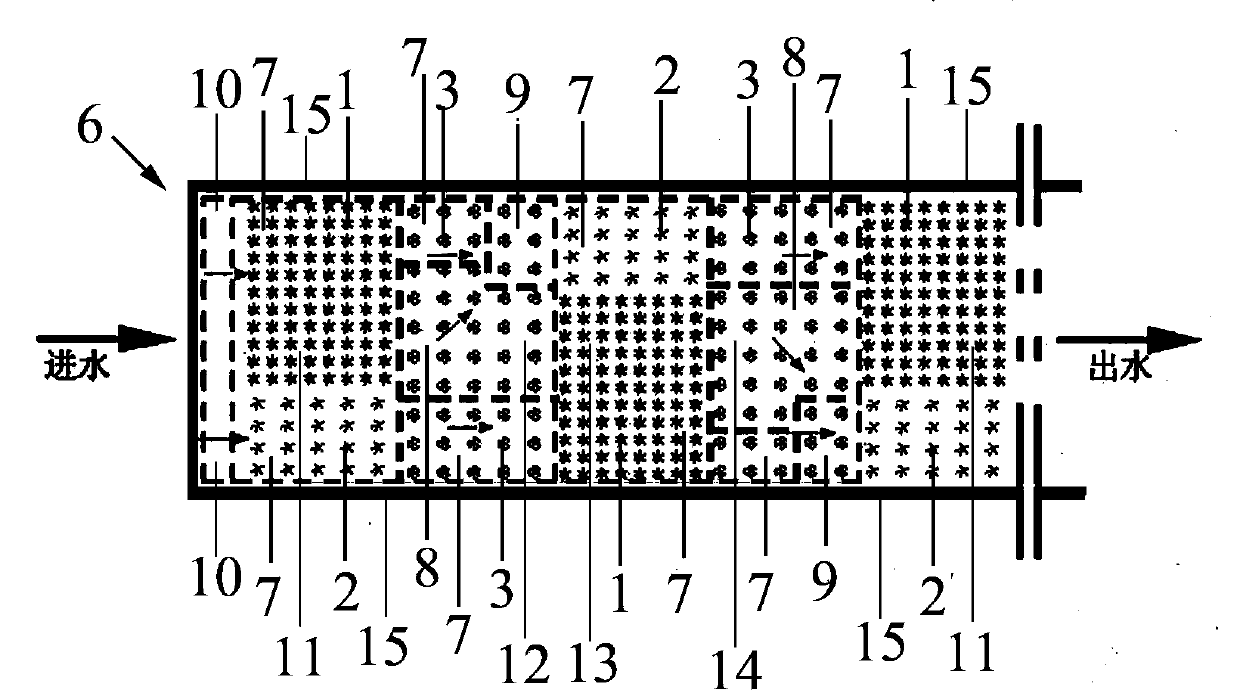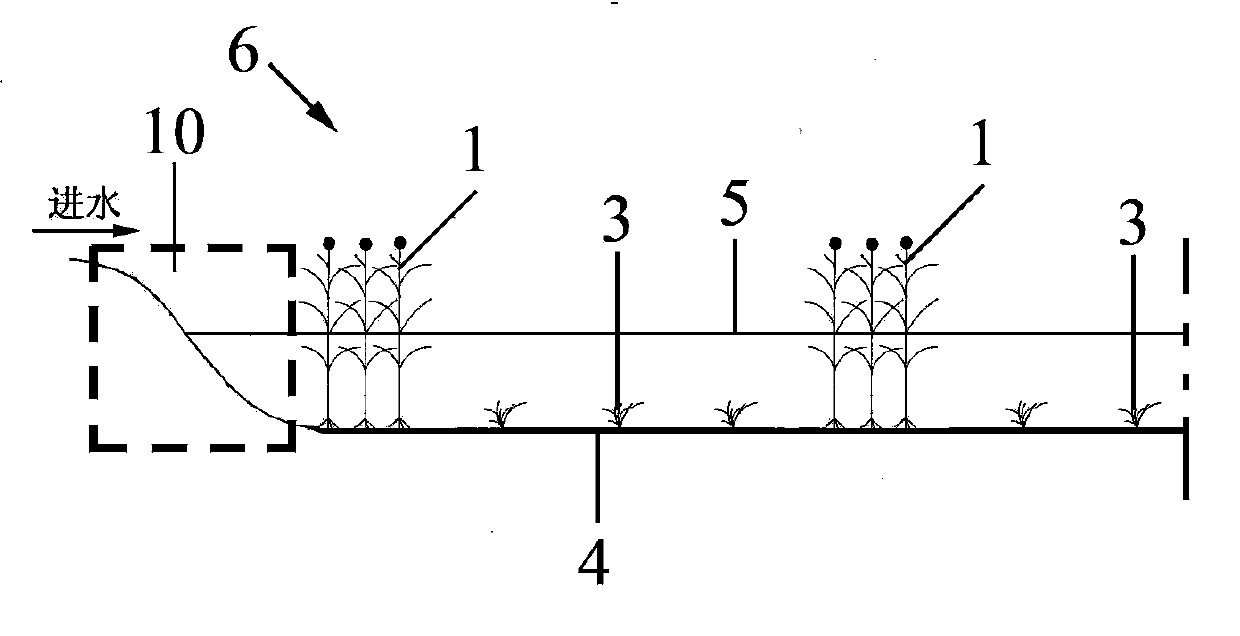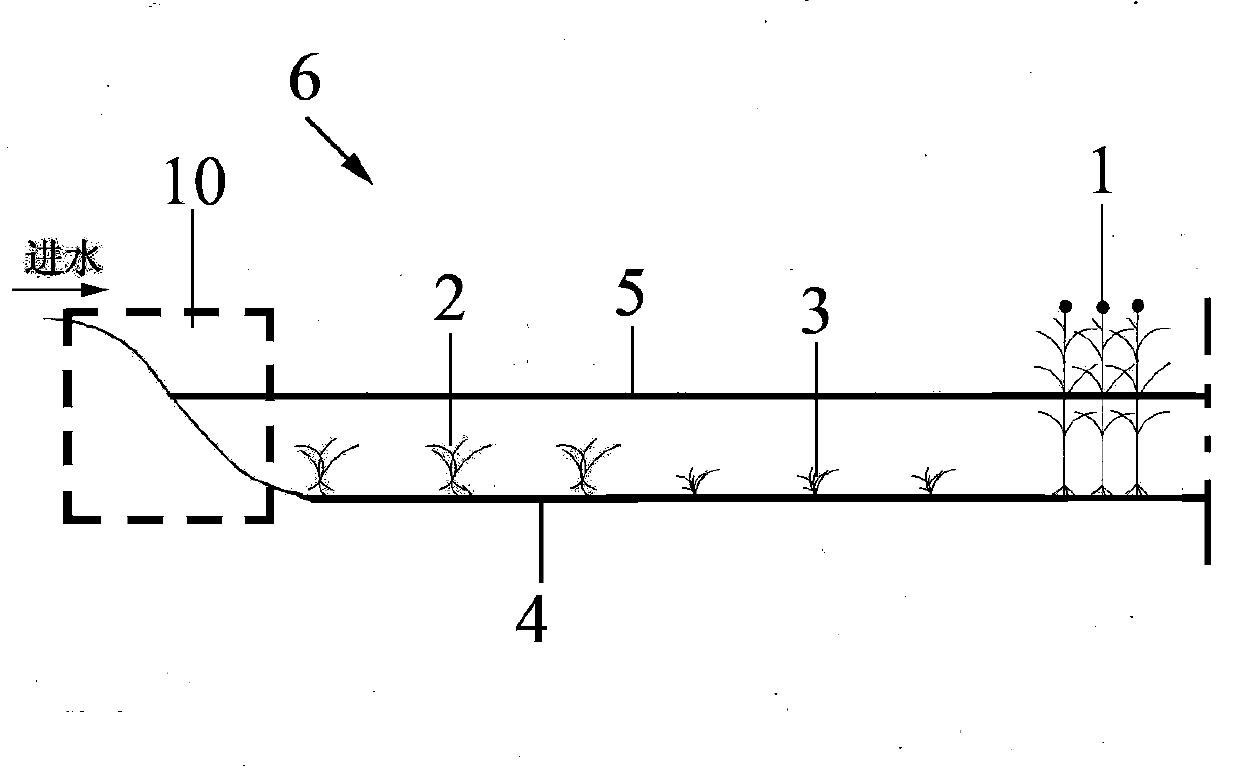Surface flow wetland water purification system with combined-type flows and water purification method
A water quality purification and composite technology, applied in chemical instruments and methods, biological water/sewage treatment, water/sludge/sewage treatment, etc. Operation and other problems to achieve the effect of reducing shock load
- Summary
- Abstract
- Description
- Claims
- Application Information
AI Technical Summary
Problems solved by technology
Method used
Image
Examples
Embodiment 1
[0065] Consisting of surface flow wetland (6), diversion plant group (11), flow regulation plant group (12), staggered flow diversion plant group (13) and staggered flow regulation plant group (14), the surface flow wetland (6) as a whole Rectangular, one end of the surface flow wetland (6) is the water inlet, the other end of the surface flow wetland (6) is the water outlet, diversion plant groups (11), flow regulating plant groups (12), cross diversion The plant group (13) and the staggered flow regulating plant group (14) constitute a unit, at least one unit is set in the surface flow wetland (6), and the diversion plant group (11) arranged in the surface flow wetland (6) , flow-regulating plant group (12), staggered diversion plant group (13) and staggered flow-regulating plant group (14) are equal in area, and the water flow buffer zone (10) is set at the water inlet end of the surface flow wetland (6), and the water flow buffer The area (10) is designed as a gentle slope...
Embodiment 2
[0069] The flow-regulating plant group (12) is composed of a rectangular diversion group (3) of submerged plants. The diversion group (3) is planted on the bottom (4) of the surface flow wetland (6), the stems and leaves of the submerged plant rectangular diversion group (3) are below the water surface (5), and the submerged plant rectangular diversion group ( 3) The submerged plants used are at least one species of black algae, bitter grass, foxtail algae, hornwort algae, microphylla, charophyta, weed, and elodea.
[0070] On one side of the surface flow wetland (6), the water flowing out from the rectangular diversion group (1) of the emergent plants (11) flows through the rectangular diversion group (1) of the submerged plants ( 3), the water flow is affected by the distance between the wetland pool edge (15) and the submerged plant rectangular diversion group (3), the flow velocity of the water flow slows down, and the water flow forms a direct current flow to form a direc...
Embodiment 3
[0076] The staggered diversion group (13) is composed of a rectangular diversion group of emergent plants (1) and a rectangular diversion group of artificial aquatic plants (2). side, accounting for 1 / 3 of the area of the staggered diversion group (13), the rectangular diversion group of emergent plants (1) is planted on the other side of the surface flow wetland (6), and the rectangular diversion group of emergent plants (1) The planting area accounts for 2 / 3 of the area of the staggered diversion group (13), and the emergent plants used in the rectangular diversion group (1) are reed, umbrella grass, Yujiuhua, calla lily, wild taro, and yellow flower There should be at least one species of iris, parsley, marshmallow, cattail, water onion, and canna. The ratio of the distance between the plants of the rectangular diversion group of artificial aquatic plants (2) to that of the rectangular diversion group of emergent plants (1) is 2:1.
[0077] The flow-regulating plant gro...
PUM
 Login to View More
Login to View More Abstract
Description
Claims
Application Information
 Login to View More
Login to View More - R&D
- Intellectual Property
- Life Sciences
- Materials
- Tech Scout
- Unparalleled Data Quality
- Higher Quality Content
- 60% Fewer Hallucinations
Browse by: Latest US Patents, China's latest patents, Technical Efficacy Thesaurus, Application Domain, Technology Topic, Popular Technical Reports.
© 2025 PatSnap. All rights reserved.Legal|Privacy policy|Modern Slavery Act Transparency Statement|Sitemap|About US| Contact US: help@patsnap.com



